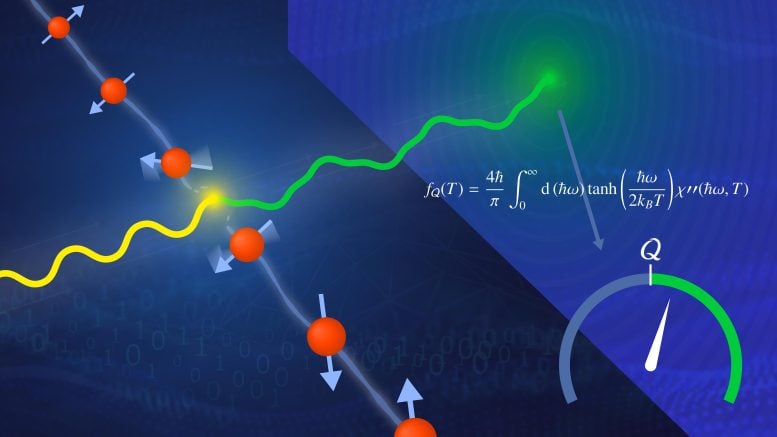
A material’s spins, depicted as red spheres, are probed by scattered neutrons. Applying an entanglement witness, such as the QFI calculation pictured, causes the neutrons to form a kind of quantum gauge. This gauge allows the researchers to distinguish between classical and quantum spin fluctuations. Credit: Nathan Armistead/ORNL, U.S. Dept. of Energy
Quantum entanglement occurs when two particles appear to communicate without a physical connection, a phenomenon Albert Einstein famously called “spooky action at a distance.” Nearly 90 years later, a team led by the U.S. Department of Energy’s Oak Ridge National Laboratory demonstrated the viability of a “quantum entanglement witness” capable of proving the presence of entanglement between magnetic particles, or spins, in a quantum material.
The team – including researchers from ORNL, Helmholtz-Zentrum Berlin, the Technical University of Berlin, Institut Laue-Langevin, Oxford University and Adam Mickiewicz University – tested three entanglement witnesses using a combination of neutron scattering experiments and computational simulations. Entanglement witnesses are techniques that act as data analysis tools to determine which spins cross the threshold between the classical and quantum realms.
First introduced by John Stewart Bell in the 1960s, entanglement witnesses confirmed that the quantum theory questioned by other scientists had been correct. Bell’s technique relied on detecting one pair of particles at a time, but this approach is not useful for studying solid materials composed of trillions and trillions of particles. By targeting and detecting large collections of entangled spins using new entanglement witnesses, the team extended this concept to characterize solid materials and study exotic behavior in superconductors and quantum magnets.
To ensure that the witnesses could be trusted, the team applied all three of them to a material they knew to be entangled because of a previous spin dynamics study. Two of the witnesses, which are based on Bell’s approach, adequately indicated the presence of entanglement in this one-dimensional spin chain – a straight line of adjacent spins that communicate with their neighbors while disregarding other particles – but the third, which is based on quantum information theory, fared exceptionally well at the same task.
“The quantum Fisher information, or QFI, witness showed a close overlap between theory and experiment, which makes it a robust and reliable way to quantify entanglement,” said Allen Scheie, a postdoctoral research associate at ORNL and a lead author of the team’s proof-of-concept paper published in Physical Review B.
Because fluctuations in a material that appear to be quantum in nature can be caused by random thermal motion, which only vanishes at absolute zero on the temperature scale, most modern methods cannot distinguish between these false alarms and actual quantum activity. The team not only confirmed the theoretical prediction that entanglement increases as temperature decreases but also successfully differentiated between classical and quantum activity as part of the most comprehensive QFI demonstration since the technique was proposed in 2016.
“The most interesting materials are full of quantum entanglement, but those are precisely the ones that are the most difficult to calculate,” said ORNL neutron scattering scientist Alan Tennant, who leads a project focused on quantum magnets for the Quantum Science Center, or QSC, a DOE National Quantum Information Science Research Center headquartered at ORNL.
Previously, the challenge of quickly identifying quantum materials presented a significant roadblock to the center’s mission, which involves exploiting entanglement to develop novel devices and sensors while advancing the field of quantum information science. Streamlining this process with QFI allows QSC researchers to focus on harnessing the power of substances such as rare phases of matter called quantum spin liquids and materials that do not resist electricity called superconductors for data storage and computing applications.
“The power of QFI comes from its connection to quantum metrology, in which scientists entangle multiple quasiparticles to shrink uncertainty and obtain extremely precise measurements,” Scheie said. “The QFI witness reverses this approach by using the precision of an existing measurement to determine the minimum number of particles each spin is entangled with. This is a powerful way to reveal quantum interactions, which means that QFI is really applicable to any quantum magnetic material.”
Having established that QFI could correctly categorize materials, the team tested a second one-dimensional spin chain, a more complex material featuring anisotropy, which is a property that causes spins to lie in a plane rather than rotating at random. The researchers applied a magnetic field to the spin chain and observed an entanglement transition, in which the amount of entanglement fell to zero before reappearing. They published this finding in Physical Review Letters.
To achieve these results, the researchers studied both spin chains using neutron scattering and then analyzed legacy data from experiments conducted decades ago at the ISIS Neutron Source in England and the Institut Laue-Langevin in France along with new data from the Wide Angular-Range Chopper Spectrometer located at the Spallation Neutron Source, a DOE Office of Science user facility operated by ORNL. They also ran complementary simulations to validate the results against idealized theoretical data.
Neutrons, which Tennant describes as “beautifully simple,” are an ideal tool for probing the properties of a material because of their neutral charge and nondestructive nature.
“By studying the distribution of neutrons that scatter off of a sample, which transfers energy, we were able to use neutrons as a gauge to measure quantum entanglement without relying on theories and without the need for massive quantum computers that don’t exist yet,” Tennant said.
According to the team, this combination of advanced computational and experimental resources provided answers about the nature of quantum entanglement originally asked by the founders of quantum mechanics. Scheie expects that QFI calculations are likely to become part of the standard procedure for neutron scattering experiments that could eventually characterize even the most mysterious quantum materials.
References:
“Witnessing entanglement in quantum magnets using neutron scattering” by A. Scheie, Pontus Laurell, A. M. Samarakoon, B. Lake, S. E. Nagler, G. E. Granroth, S. Okamoto, G. Alvarez and D. A. Tennant, 28 June 2021, Physical Review B.
DOI: 10.1103/PhysRevB.103.224434
“Quantifying and Controlling Entanglement in the Quantum Magnet Cs2CoCl4” by Pontus Laurell, Allen Scheie, Chiron J. Mukherjee, Michael M. Koza, Mechtild Enderle, Zbigniew Tylczynski, Satoshi Okamoto, Radu Coldea, D. Alan Tennant, and Gonzalo Alvarez, 13 July 2021, Physical Review Letters.
DOI: 10.1103/PhysRevLett.127.037201
The researchers received support from the DOE Office of Science, DOE’s Scientific Discovery through Advanced Computing program, the QSC, ORNL’s Laboratory Directed Research and Development program, the Center for Nanophase Materials Sciences – a DOE Office of Science user facility located at ORNL – and the European Research Council under the European Union Horizon 2020 Research and Innovation Programme.

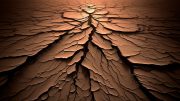
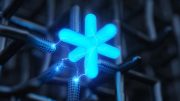
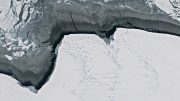
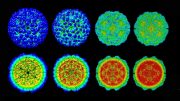

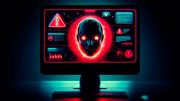
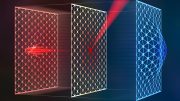

so ill tell you what mullach abu is seeing in 3d euclidian space at normal clock time
the heisenberg uncertainty principle at play with a mullach abu formulation that nobody has ever explained in simple detail to anyone
are u ready get set go
take a yellow line take a green line
begin at the left hand side of the picture
the crest of a yellow wave 1a
followed by
the trough of a yellow wave 1b
followed by three more yellow crest peaks 2a 3a 4a
followed by three more yellow troughs 1b 2b 3b
where it meets or does not meet a line of six red spheres with light blue arrows going through them on a wavy blue line
and it seems it has hit one
where by a hybrid form has taken place
and this hybrid form moves across space in the direction of the green line
three crest peaks 5a 6a 7a where it hits a blue wall and a green arrow states it has hit the quantum gauge
three troughs 5b 6b 7b assist it to get to the blue wall
which now leaves the six red spheres with the light blue arrows travelling along their merry way
well isnt that what u are seeing do you have eyes to see look and observe its there
only its at quantum scale and instead of being seconds and minutes you are recording femtoseconds for yellow 1a 1b 2a 2b 3a 3b 4a yellow green transition hybrid 4b 5a 5b 6a 6b 7a 7b green line
1/14 2/14 3/14 4/14 5/14 6/14 7/14 8/14 9/14 10/14 11/14 12/14 13/14 14/14 of that femtoseconds that it takes to get from 1a yellow to 7b green in all possible quantum states focused down into one probable mullach abu state
all occuring in 3d eulcidian space + extra dimension 4d of time
well did u see that well if u did and have walked away im afraid you have only seen half the picture so focus and concentrate what else do you see
nothing well then thats what everybody else seems to have seen also to now
so mullach abu informs u
take a blue wavy line with six red spheres whats their direction of movement
this blue wavy line is the wave crest peak of the earth ocean waves
they are bobbing along in 3d space just like a surfers wave out there
and the red bobs are the surfers on the h2o wave
and further to confuse you altogether
the blue wavy line started at crest peak 1a moved to trough 1b all six in circumfernce line
bobbed up to 2a
bobbed down to 2b the whole line of them all six
and now rest where they are imaged six in a row
and where do you think they are going if they have travelled that distance in that space of femtosecond clock time
the blue wall is the direction of travel the sandy sea shore for want of an earthly phrase where the wave will come crashing down all over you and
you have recorded a hybrid at three and a half red spheres ie a surfer without board has arrived on the beach
so at the blue wall
six red spheres still exist in space and time surfers on a board in no uncertain heisenberg princple
the fact is you have not recorded the xyz location of each and every red sphere in euclidian space u have only recorded one
and when you do record all seven you will discover that one the seventh has been hybrided only
and its surf board needs to be recovered
its time to go down to the beach to swim a little in the ocean waves everybody do you get out at all mullach abu wise
Is a lie you can not check the entangled particles communicate at some big distance instantaneous when the faster speed of light is only 300000 km per second.You can not be in both places at millions miles away and to observe this communications instantaneous between entangled particles.
Re:Einstein’s “spooky entanglements,”God created the universe,fashioning something from nothing.The Big Bang represents a
concentration of energy that exploded & expanded,later contracted from gravitationl mass& again expanded-to this day.Hence,the original “paired” particles,later separated across huge distances,still affect each other.When one of the pair is positive,the other is negative,equalling+&- : zero,with which all began,across the board.It’s not so spooky after all!